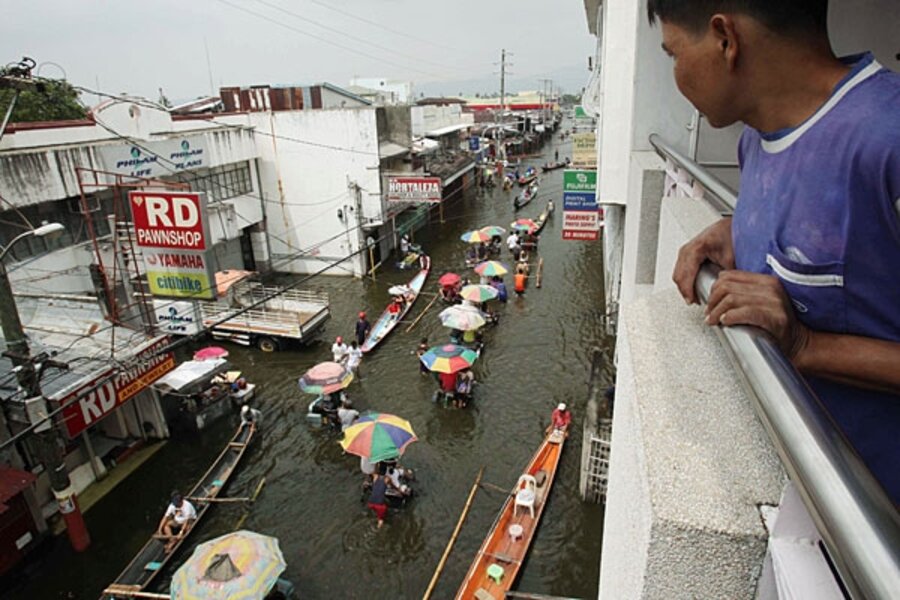Philippines dodges typhoon Parma, but typhoon Melor is coming
Loading...
In a week that saw Samoa hit by a tsnuami and Indonesia shaken by a quake, the Philippines caught a break: Typhoon Parma missed the capital of Manila.
Just one week after a hurricane flooded 80 percent of Manila, killing 300 people and displacing at least half a million, the devastated city has been spared a second major storm.
Typhoon Parma had threatened to dump even more heavy rains over the city, trigger more landslides, and block relief efforts. President Gloria Macapagal Arroyo had declared a "state of calamity" in anticipation of more flooding.
Though typhoon Parma did strike the island of Luzon, where Manila is located, and kill 16 people, it then bypassed the capital and edged toward the less densely populated north. It was also downgraded to a tropical storm Monday, with winds of 59 mph and gusts of up to 75 mph, according to the Associated Press.
Typhoon to hover until Thursday
Parma is still expected to cause severe damage, though, dumping heavy rains not just in the northern Philippines but also Taiwan, where 6,000 villagers have been evacuated. Instead of continuing on its path away from the country, it's predicted to linger over the city of Laoag and surrounding areas until Thursday. That's because a third typhoon, Melor, churning in the Pacific, is acting "like a magnet" and holding Parma in place, according to Agence France-Presse.
The days-long rain is likely to cause more floods, landslides, and crop damage. "[Parma] may weaken but remaining stationary has a different effect on the affected areas,” Nathaniel Cruz, head of the Philippine Atmospheric, Geographical and Astronomical Services Administration (Pagasa), was quoted in the Inquirer, a Philippines newspaper, as saying.
Typhoon Melor is projected to pass over Philippine waters but not hit the mainland.
Manila: mountains of garbage, schools under water
Meanwhile residents of Manila and nearby Quezon City are trying to recover from Ketsana. Parts of the capital remain "chest-deep in water, or covered in thick mud or garbage," the AP reported. A lake in Manila, Lake Laguna, rose more than 3.3 feet during the storm and could spill into neighborhood housing more than 100,000 people if the rain continues, Ed Manda, general manager of the lake's development authority, told the AP.
Schools were instructed to reopen Monday but many were unable to comply. Some are still under water; others are occupied by people whose homes were flooded or destroyed.
Ketsana also damaged about $139 million in crops, "mostly rice about to be harvest," according to Reuters.
Minimal economic damage?
Still, the recent disasters may leave less economic damage than expected, economists told Bloomberg.
However bad the damage, rebuilding often makes up for it by stimulating the economy, another analyst said.





